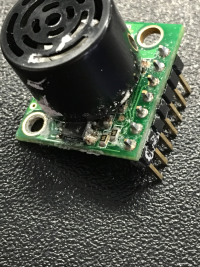How Salt Water Affects Electronics
Key Takeaways
- Know the effects of salt water on electronics
- See how salt water damages electronics
- Learn how to clean off salt water residue
Pure distilled water does not conduct electricity and will not damage most electrical equipment that is clean and free of debris. Tap water is not pure water because it mixes with polarized minerals as it makes its way through your pipe. These polarized minerals are what makes water conduct electricity. This is how water, causes most electronics to short.
Salt water, on the other hand, can be dangerous to electronics. This is due to the NaCI (Sodium chloride) creating a chemical bond with many surfaces. These bonds happen immediately upon wetting — resulting in a salt residue remaining long after the water is gone. Just one second of salt water exposure can have the same effects as all day salt water exposure. Over a period of weeks, months or even years, the salt left behind continues to corrode any susceptible, affected surface. The corrosion process continues until the salt residue is exhausted or the corroded surface is consumed.What Does Salt Water Have to Do with Sensors?
While our WR sensors are IP67 rated, salt water can still cause problems when it comes to ranging. Once a sensor is splashed with salt water, a residue forms on the transducer. It may not affect ranging immediately, but as the sensor gets repeatedly splashed, this residue continues to build. Eventually, the sensor may begin to report erratic distances or none at all. If the pin out of a WR sensor is not properly weather-proofed during installation, possible salt contamination may erode the connection causing sensor failure.
As you can see in Figure 2, the WR sensor has salt deposits in the horn and on the transducer. If the residue is not neutralized it continues to build over the transducer which hinders or slows the sound wave and makes ranging difficult. The MB1000 sensor has salt deposits around the integrated circuits and all metal components. Until this residue is neutralized it continues to eat away at this board until the components are rusted and destroyed. This test was done with the indoor sensor to emphasize pin out damage, showing what salt can do to exposed circuitry and non-weatherproofed PCB material.
How to Neutralize Salt Water Residue
You can scrub for hours and the salt residue will remain, but you must neutralize the salt. There are products you can buy to accomplish neutralization, but you can also remove the residue by using isopropyl alcohol 90% or stronger.
Steps to Neutralize Salt Residue- Remove from the power source, then remove all wires, ribbon cables, anything that is attached.
- Take a soft, bristled brush, dip in isopropyl alcohol, and gently scrub. Scrubbing too hard may cause more damage to the already fragile components.
- You may repeat this process until the residue is gone.
- Once the board is clean, set to the side to dry.
- You need to clean every wire and cable that was removed. Pay particular attention to the connectors and ends of the ribbon cables to prevent corrosion of their contact surfaces.
- After the board and all the parts are clean, use de-ionized water to rinse off the isopropyl alcohol residue.
- Do not reassemble until all components are dry and free of residue.
Contact our technical support team if you need any additional help or have any questions about sensor selection or technical support. We are here to help you succeed.











